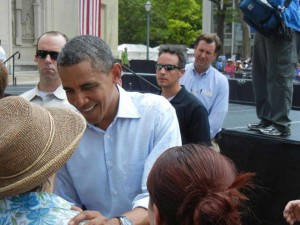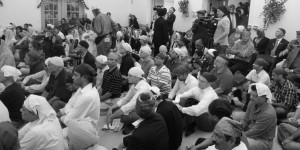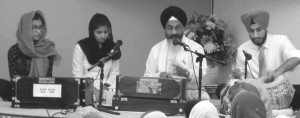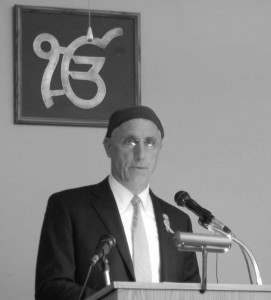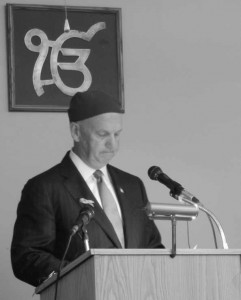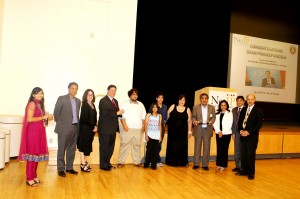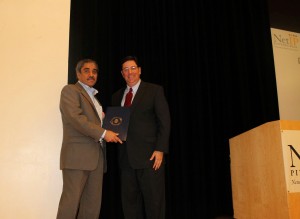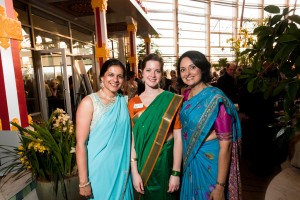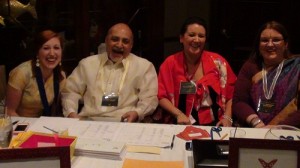Adieu, My Friends!
Posted by admin in January 2013 on January 1, 2013
 By Prasad Potluri              e-mail: prasad@potluris.net
Prasad Potluri arrived in Pittsburgh seventeen years ago, starting his life living from his car. While working as an IT professional, with his innate entrepreneurial instincts, he ventured into a range of enterprises — screening Telugu Films, grocery stores, and Indian restaurants. After succeeding in all these, before returning to India in Spring 2013, here he takes leave of the people he worked with, lived with, and the people who were his customers.
It has been a wonderful time for me in Pittsburgh from Day 1 when I moved as a bachelor in 1995. Interacting with the few Indians living in Carriage Park then, I do not even remember how time went until I got married to Prasanthi in 1996. I met several wonderful friends who have been with me ever since, some of them becoming my business partners. It was an exhilarating journey for me.
When I was bored at work and had a lot of time, my mind wandered thinking of new things I could do. So, I started the site Living “Indian†in Pittsburgh, now known as www.pittsburghindian.com, a free site that helps newcomers to Pittsburgh to settle in.
Then in 2003, I jumped into the restaurant business. Coming from a business family, all I know was that if you provide the best service in your business, you will eventually succeed. I have followed this dictum all through, and I survived—even succeeded—in the business for which I thank my customers. From a restaurant in one little corner, we ended up operating in six locations spreading the wings around Pittsburgh with the names Tamarind and Manpasand. Working with my customers trying to provide the service they wanted was very satisfying to me.
I cannot thank enough Pittsburgh’s Indians who have been good to me and the businesses all these years. I leave these businesses in the capable hands of my partners who will manage them well.
Starting my life living out of a car and then moving into a comfortÂable suburban family-oriented neighborhood, I acknowledge that Pittsburgh has been so good to me. So, as I prepare to move back to India, I find it difficult to take leave of you after all these years.
Pittsburgh will always be my second home. I may not know many of you personally, but many of you will remember the person behind the service you received all these years if you had come to any of my estabÂlishments. With your blessings, I hope to make this difficult transition. Thanks again.
Indian Music Enthusiasts Present A Lec-Dem on the History of Hindustani Music
Posted by admin in January 2013 on January 1, 2013
 By Shambhavi Desai, Bridgeville, PA
Editor’s Note: Shambhavi, after receiving her initial training in the Indian dance tradiÂtions from her mother, went on to earn under- and post-graduate degrees in dance from the Gandharva Mahavidyalaya, Baroda. She also has a diploma in vocal music from M.S. University, Baroda. She teaches dance and music in her school Sanskruti. More info in available at www.sanskrutipgh.com.
Shambhavi acknowledges Anupama Mahajan’s and Nalini Padmanabhan’s help in finalizing the article.
The University of Pittsburgh’s Department of Music in collaboraÂtion with Chhandayan presented a concert on September 9, 2012 at the Frick Fine Arts Auditorium on the History of Indian Music focusing on Hindustani music. Pta. Tripti Mukherjee, the founder-director of the Pt. Jasraj Institute of Music developed the concept for the program, with her disciples giving the recital in the program.
The two-hour program was informative and enjoyable to all regardless of their extent of familiarity with Indian Classical Music. Using a PowÂerPoint presentation to narrate the story, different genres of Hindustani music were presented.
The performing artistes were Nidrita Mitra Sinha, Nalini Padmanabhan, Shambhavi Desai, Priyadarshi Desai, Shailesh Surti, Anupama Mahajan and Babeena Sharma, as well as younger disciples of the Pt. Jasraj Institute of Music, Eishan Ashwat, Moha Desai, Ashutosh Sharma, Rivu Sinha and Divya Ramkumar. Priyadarshi Desai was on the Harmonium and Asish Sinha provided the laya (rhythm) support on the Tabla.
The evening commenced with an introduction to Indian music with its two broad categories — Hindustani music from Northern India and Karnatic music from Southern India. The common origins of Hindustani and Karnatic music in the vedas with just three notes — Udaat, Anudaat and Swarit — and its gradual evolution into two distinct forms of music were covered effectively. The concert then progressed to focus on the evolution of Hindustani Music through the ages.
The first piece was a Vedic composition on Agni (Fire) from Rig Veda with just three ‘swaras’ and Saam Veda with five ‘swaras’ presented by Nidrita, Nalini, Shambhavi, Anupama and Babeena. This was followed by a Saraswati Bhajan, composed in Raag Saraswati and presented by Eishan, Moha, Ashutosh, Rivu and Divya. The journey continued with melodious renditions of different genres of Hindustani music — Tappa, Dhrupad, Khayal, Haveli Sangeet, Thumri and Bhajan.
The audience was introduced to India’s ‘Bhakti’ movement. StartÂing from the 5th century in Southern India, it emphasized the intense personal devotion of worshippers towards their personal deities using lyrics mostly in regional languages of the times and in Sanskrit.
Nidrita presented Tappa or Jati Gaayan — a light classical comÂposition with intricate and fast-paced patterns of swaras (notes). As Indian music was influenced by the Islamic advent at the end of the 12th century, it brought the Persian culture with it. As an example of this, a composition of Amir Khusro was rendered in Raag Zilaf in Rupak Taal presented by Priyadarshi and Shailesh.
The evening continued with a group performance of the oldest genre of Hindustani classical music that is still performed — Dhrupad, in Raag Basant set in Chautaal. Dhrupad was popularized by Raja Mansingh Tomar of Gwalior, in today’s Madhya Pradesh in India.
Babeena rendered a Kirtan in Haveli Sangeet, a genre that has been revived by Pt. Jasraj of the Mewati Gharana. The composition was in Raag Yaman set to Deepchandi Taal.
Just as Venkatamakhi’s Chaturdandi-Prakashika (17th century) laid the structural foundation for the ragas of Karnatic Music, the modern era of Hindustani music is indebted to two doyens of the early 20th century: Pt. Vishnu Digambar Paluskar and Pt. Vishnu Narayan Bhatkhande, both from Western India (today’s Maharashtra), who gave the structure for modern Hindustani music we see in different genres — Khayal, Thumri, Chaiti, Kajri, and Folk traditions.
An example of Khayal (meaning ‘thought’ in Persian) style of singÂing was presented by Anupama with Nalini accompanying her for the Tarana — in Raag Nayaki Kanada set in Teen Taal.
Another popular style of light classical music is Thumri, characterÂized by great flexibility with the raag. The text is either devotional or romantic, revolving around Gopika’s love for Krishna. Shambavi presented a Thumri in Raag Khamaj set in Addha Taal.
The concert concluded with a mellow signature bhajan of Meerabai, composed by the doyen of Mewati Gharana, Pandit Jasraj. This was presented by all participants en masse.
It was rather extraordinary to see a full auditorium for an Indian clasÂsical concert whose audience consisted of both Indian-Americans, and more importantly, students from neighboring colleges and schools.
After the program, all left with good vibes, having listened to differÂent styles of Hindustani music, and having received a broad outline on the evolution of Hindustani music through the millennia.
My Peeve with Bollywood Shows
Posted by admin in January 2013 on January 1, 2013
By Kollengode S Venkataraman        e-mail: ThePatrika@aol.com
You are a typical guy or gal who likes listening to Bollywood songs, but are not heavily “into†it. If I give you the starting lines of popular Hindi songs, you can right away identify the playback singers, the actors who lip-synch for the song, and the film in which the song appeared. You will be less certain about the music directors who set the tune, and you will may not know the lyricists who penned the song. So, Bollywood shows held all over India and outside are popular, where organizers try to satisfy the yearnings of people to re-live their old days, and to go back on a nostalgia trip mentally recreating the old magic.
Understandably, in these shows, singers re-creating the pieces already recorded in songs, pay all their attention to the way the original playback singers render the songs. They pay tribute to the original playback singers using hyperbolic phrases.
But no matter how good these playback singers are, in the context of Indian films, they only lend their voices. Does it ever occur to the singers in Bollywood shows that without the lyricist, there is no need for playback singers no matter how talented they are? And before these singers step into the recording studio, a lot of creative and artistic work is already done?
In creating songs in films, the Indian film industry has wisely comÂpartmentalized the skills required, namely, creating the lyrics; developing the music; and then singing. Often, the lyricists have no singÂing skills, but are well-grounded in the literary and cultural traditions of India, and are aware of Indian music traditions. And the music directors have limited singing skills, but are rooted in India’s classical, traditional and folk melodies. And the playback singers often have no grounding in the literary traditions of any Indian language, including their own mother tongue. Their assets are their well-trained vocal chords — nothing else.
Typically, the film director describes to the music director and the lyricistthe story line and situations where he/she would like songs in the film. The playback singers are nowhere in the picture at this stage.
Then, the music director and the lyricist put their creative minds toÂgether and come up with the tune and the lyrics to reflect the situations. A lot of give-and-take goes on between the music director and the lyricist when they integrate the tune and the lyrics to reflect the underlying themes of the song — pathos, happy mood, self-pity, disillusionment, humor, satire, sarcasm… …
The music director and the lyricist fit all this into songs that are three to five minutes long, with a mukhada* (Hindi) or pallavi (Tamil) that is repeated after two or three antaras* (Hindi) or charanams (Tamil).
The lyricists choose their words creatively conforming to the flow, meter, alliteration, rhyming schemes of the languages, describing the theme, mood, period, and the character in the film who lip-synchs the song. Only then, the playback singers come into the picture.
Often, in the Indian filmi-duniya, playback singers have no literary background or poetic skills. They may have a sketchy grasp of the Indian musical tradition. I am not belittling them here. I am only stating the obvious. How many of Bollywood playback singers can compose, say, a few verses of 4-line shayaris or 2-line dohas around unifying theme in their own mother tongue? Or in any other Indian language? And how many of them can give a sold-out concert with non-filmi songs? There are exceptions, but they are rare.
Often, the music director, like a drillmaster, works with playback singers on how to emphasize which phrase, and where they should draw out the phrases, where to simply hum, where to taper it off, and where they should leave pauses and for how long — all to embellish the song. The playback singers follow their music directors closely and give what the music director is expecting out of them.
Given this, it is inexcusable that in Bollywood events in India and outside emcees and singers, while praising the playback singers to the sky with visual aids projected on large screens, completely ignore the music directors and kavis (lyricists) altogether.
This was the case in Bharatanatyam till recently. Starting from the mid 70s, the Bharatanatyam choreographers are mostly city-bred, “convent-educated†women with barely a colloquial working knowledge of their own mother tongues, not to speak of other Indian languages. In their programs and brochures, they never used to give credit to the poets whose songs they use in their storytelling. But with criticism in the media on this point, many of them are taking pains to acknowledge the poet-philosophers and kavis whose works they use in recitals.
The situation is better in Tamil films. Song writers (Kannadasan, Vali, Papanasam Sivan, Vairamuthu) and music directors (Viswanathan, Ilaya Raja, K.V.Mahadevan, A.R.Rahman, and others) are household names. So, in Tamil shows, they acknowledge the music director and the poet.
When will the sophisticated among the Bollywood shows’ audiences start demanding from the organizers, emcees, and singers that they credit the music director and the lyricist for every item they sing ?
* the author thanks Shambhavi Desai for these Hindi literary terms.
Ha! Now its Our Turn to Laugh at the Political Pundits!
Posted by admin in January 2013 on January 1, 2013
Before the November elections, while most surveys showed Obama and Romney locked in a dead heat, Gallup predicted Romney would win by a comfortable 6% lead [in popular votes].
But President Barack Obama won with 51% popular votes (PV) and 332 electoral votes (EV) with Gov. Mitt Romney getting 47% PVs and 206 EVs.
In contrast to the final result, this is how the political pundits predicted the outcome days before the election:
• Newt Gingrich: “I believe the minimum result will be 53% to 47% Romney [popular votes], [and] over 300 electoral votes.â€
• Karl Rove: Romney 285, Obama 253 [electoral votes]. “If crowds at his recent stops in these states [NV, WI and PA] are any indication of his supporters’ enthusiasm, Mr. Romney will likely be able to claim vicÂtory in these states as well.†Romney lost in all the states
• Dick Morris, Fox News contributor: Romney 325, Obama 213 [electoral votes]. “It will be the biggest surprise in recent American poÂlitical history… …â€
• Conservative columnist George Will: Romney 321, Obama 217. “The wild card in what I’ve projected is I’m projecting Minnesota to go for Romney.†Minnesota went to Obama.
• House Speaker John Boehner: “I think Ohioans vote with their walÂlets. That’s why I think Romney’s going to win on Tuesday.â€
• Fox News’s Sean Hannity: “I got this, Romney three [percentage] points [in popular votes]â€
• CNBC’s Larry Kudlow, predicting a Romney landslide: “I am now predicting a 330 electoral vote landslide [for Romney]. Yes, that’s right — 330 electoral votes.â€
• Rush Limbaugh in his daily radio talk show: “All of my thinking says Romney big… …[M]y intellectual analysis of this — factoring everyÂthing I see plus the polling data — it’s not even close. Three hundred-plus electoral votes for Romney.â€
• The Wall Street Journal’s Peggy Noonan: “I think it’s Romney. … While everyone is looking at the polls and the storm, Romney’s slipping into the presidency.
• Former Bush White House press secretary Ari Fleischer: “My preÂdiction: Romney 50.1%-49.5%. Romney wins minimum 271 Electoral Votes with FL, VA, CO, WI, NH. 309 Electoral Votes if he takes OH & PA. Pres-elect Romney.†Obama won in all these states. — Sources: Politico and the Internet.
So much for the punditocracy!
Only New York Times’ Nate Silver (the Five-Thirty-Eight fame) was predicting throughout that Obama would scrape through with a thin majorÂity of PVs, with the EVs anywhere between 290 and 310.
Honestly, We Cannot Build Anything ALL BY OURSELVES!
Posted by admin in October 2012 on October 20, 2012
In the days leading up to their convention in August, Republicans perversely and cynically truncated President Obama’s words from this quote: “If you were successful, somebody along the line gave you some help. There was a great teacher somewhere in your life. Somebody helped to create this unbelievÂable American system that we have that allowed you to thrive. Somebody invested in roads and bridges. If you’ve got a business — you didn’t build that. Somebody else made that happen.â€
They twisted the word “that†totally out of context to imply Obama does not understand the American ethos built on free enterprise, subliminally telling their base Obama is a Closet Commie. They dedicated an entire day in their convention at Tampa taunting Democrats with the slogan “We Built That.†This was the cheapest cheap shot in political sloganeering in 2012.
This was jarring for most people. Yes, we work hard to earn our degrees, residencies, and fellowships; yes, we indiÂvidually build our careers and businesses with great commitment and dedication. And it’s true, over the years we’ve paid, and we will continue to pay, tens of thousands of dollars in income and other taxes. But most of us are also well compensated more than monetarily.
Of course we make valuable contributions as researchers, engineers, doctors and business owners. In accomplishing all these for which we are legitimately proud, we need to remember, we use the creations, services and skills of others, often taking them for granted—the supports that we did not create, but without which we simply can not accomplish all that we do. This is true for everybody in all well-organized societies.Â
Immigrants in the US would know this better.  They use the excellent roads, reliable communication services and EMS and the 911 system; tax-payer funded public education in high schools and public libraries; reliable professional services of auto mechanics, home repairmen, analytical labs that they can not get in many parts of the world from which the immigrants come… …
Besides, all of us Indian-Americans—even those who come from influenÂtial and powerful families of land owners, politicians, business people, officials in government and the private sectors in India—received highly subsidized, tax-payer-funded university education. We paid as tuition only a tiny fraction of what it costs to run the colleges. Those who got admission into US universities received teaching and research assistantships funded by Federal and State governments; fellowships and fee deferments from endowÂments established by individuals and corporations in universities.
While nothing of worth is ever achieved without the initiative and drive of the individual, it is outright vanity and pride –Â which are sinful in the Christian tradition, and which the Dharmic faiths warn, are sure to lead to man’s downfall –Â to claim or even believe that all our accomplishments are out of individual effort alone. Along the way, many lent us their shoulders for us to stand on.
Honestly, some of us have even stepped on others’ toes, or used our parents’ strong elbows, influence, and wealth in accomplishing our goals.
The Pittsburgh Gurudwara Organizes Vigil Against Hate Crimes
Posted by admin in October 2012 on October 20, 2012
On Sunday August 5th, at the Gurudwara (Sikh temple) in Oak Creek, Wisconsin at around 10:30 a.m., preparations were going on for the prayer service and the langaar when gunman Wade Page shot people inside and outside the place of worship. Police were called and before it was all over, six Sikh worshippers were killed by the gunman and 50 others wounded. The gunman Page was himself killed by the police. For the ignorant Page, filled with hatred, it did not matter that an overwhelming majority of Muslims in the US do not wear turban at all. Ignorance and hatred are always an incendiary combination in all situations.
Instantly, the sporadic tauntings and threats faced by turban-wearing Sikhs who were mistaken for Muslims in the US after September-11 got much-needed attention nationwide. All these years, the Sikhs handled the harassment and humiliations stoically, dealing with the local police privately all over the US.
That ordinary Muslims going about their daily lives are harassed is bad enough. But what to make of the terror-filled crime perpetrated by a hateful man inside a Gurudwara mistaking the Sikhs for Muslims?
Despite instant access to information in the US, that people still do not have a basic understanding about our demographic mix is a great irony of our time.
Understandably, the FBI got involved, calling the killings at the a hate crime based on ethnicity and faith. So, all over the country, vigils were held in Gurudwaras across the nation to mourn the killings of the Sikhs in Wisconsin. In Monroeville, on Saturday August 12, the Tri State Sikh Cultural Society held a meeting and a candlelight vigil at their Gurudwara to honor the dead and wounded in the violence at the Oak Creek Gurudwara.
The vigil was well-attended by members of the larger Pittsburgh community made up of Hindus, Christians, Jews, and Muslims. The diverse gathering at the Gurudwara in terms of faith and ethnicity was in itself a powerful antidote to what happened in Wisconsin.
The well-organized, dignified, and solemn ceremony was a balm not only to the Sikhs gathered in large numbers, but also for all others traumatized by this senseless violence.
The Gurudwara’s Granthi Shri Sucha Singh set the tone for the evening when he sang a mellifluous Kirtan (Sikh hymns from the Adi Granth, the Sikh Scriptural book). He recited and expanded one verse of  Guru Nanak that urges people to overÂcome hatred and enmity with love for fellow human beings.
Two young Sikhs born and raised in the US, Bani Kaur and Amar Singh, told the audience what it means to be a Sikh. Amar Singh gave the significance of the turban and why Sikh men wear them.
US Attorney David Hickton, representing the Department of Justice of the federal government spoke to the overflowing crowd at the Gurudwara briefly in measured tone. “[A]n attack on our civil rights or a hate crime is an attack on all of us, also an attack on our nation and our principles,†he said. He assured the audience that perpetrators of hate crimes will be dealt with the full force of the law.
Congressman Tim Murphy in his address said “We are not a nation of hate, we are a nation of love, and as such there is no room for hate in this room.†He promised to lend support to Sikhs to recover from this tragedy.
A representative of Gov. Corbett and a representaÂtive of Congressman Doyle and a pastor also addressed the gathering.
Later, in the open area outside, in a solemn ceremony people lit candles at the flagstaff of the Khalsa flag as the names of those slain were called out to the chants of “Wahe Guru! Wahe Khalsa!!â€
Then as is the custom in every Gurudwara all over the world, visitors were treated simple food — called langaar among Sikhs — that was shared by all gathered. The communal sharing of food among those visiting any Gurudwara is an importnat part of the Sikh faith. Â
The Sikhs living in Southwest Pennsylvania highlighting the tenets of their faith and tradition in a very solemn and heartfelt ceremony will be long remembered by all those who attended.
Chitratan Singh Sethi, member of the Executive Committee of the Gurudwara welcomed the gathering and offered the closing remarks.
Make Your Vote Count in November!
Posted by admin in October 2012 on October 20, 2012
By Ravi Balu, Murrysville, PA
e-mail: ravibalu@hotmail.com
Dr. Ravi Balu grew up in Pittsburgh in the 1970s, practices family dentistry in Murrysville. Ravi and his wife Raji settled in the city in 1990; since then he has been actively involved in the South Asian community as well as grass roots politics.
The November presidential election is likely to be a very close one, and whoever wins in Pennsylvania is likely to the next president. So, this is an appeal for all of you to go and vote on November 6.
Think back to our humble beginnings in the mid 1960s, when the Indian American community was made up of only a handful of families; most were pursuing their graduate studies, residencies at the local universities and hospitals, or working at Westinghouse. Fast forward fifty years: as South Asians, we are the third largest ethnic group in the greater Pittsburgh metÂropolitan area, after Caucasians and African Americans. The population of our community doubled from the 1990 to the 2000 census and is one of the well-recognized ethnic groups in the area.
Indian-Americans have made valuable contributions in many diverse fields in Western Pennsylvania—including performing and visual arts and veterinary medicine, not to speak of our presence in healthcare, engineering and technology, IT, research & teaching, the hospitality industry, architecture & civil engineering, and small and medium businesses.
Though we are relatively small in number, our community has contributed to making Pittsburgh one of the top ten most-livable cities having a vibrant housing and job market.
Therefore, we should have influential voices on how we govern ourselves—whether it is in city, municipal or county governments, state legislature, or in US Congress—to voice our concerns about school education, poverty alÂleviation, escalating costs in higher education and healthcare, urban growth, and opportunities for our kids’ futures.
It is wonderful to see that a number of our community members have taken the initiative to run in local elections. We should support them wholeheartedly, participate in electing local and state legislators, and members for the US Congress, not to speak of electing the next president.
So on November 6th, please go to vote and make a statement. You need to have eligibility to vote—natural or naturalized citizenship—and you should be registered to vote. For registering to vote, please visit your local post office to pick up an application.
If you are interested in getting involved with local campaigns or have any questions about registering to vote, please contact the U.S.-India Political Action Committee’s Pennsylvania chapter at www.usinpac-pa.com.
A New Indian Community Center Opens
Posted by admin in October 2012 on October 20, 2012
By Subhash Joon e-mail: sjoon@wowglobal.com
Subhash Joon was born in Rohtak area of Haryana, India and arrived in the US in 1998 on project for US Steel. He has done B.Tech from India and completed a small-MBA program at Pitt. After being an entrepreneur of an IT consulting company for ten years, Joon, with his wife Sarita Khatri, is now focusing on Nirvana Development, their real estate development/investment company. Subhash lives in Upper St Clair, PA.
While attending a dinner with several friends, someone said, “Temples are so far away for people who live southwest of Pittsburgh. Why don’t we have anything on this side of town where we can have Indian community programs and do the cultural things that temples offer?â€
That’s how it all started. There was certainly interest and need for people of Indian origin for a facility like a community center. Being in real estate investment and development for years, I always wanted to develop ideas outside commercial projects. I started talking to more people in the community to get some feedback, which turned out to be very positive.
The next step was to convince my wife of the idea and explain to her how we could develop an Indian center and perhaps name it “Karma Center.†The Indian center, we discussed, could have a banquet hall, an Indian restaurant, space for yoga and dance-type activities, including a small, unique type of Karma temple (maybe) without any priest or reliÂgious images.
After three years of hard work and substantial financial investments, we have finished the Indian Community Center (ICC) at Carnegie. During the development of the project, we brought in new passionate partners who helped grow the idea and who had experience in the restaurant industry. During the development process, we decided to convert the small Karma temple area into a library and a cultural hall to have more focus on educaÂtion and about Hindu living.
The ICC opened its doors to the public on Feb. 27th, 2012 at 205 Mary Street, Pittsburgh, PA. The phone number is (412) 278-5058. The ICC houses the Café Delhi restaurant, a large banquet facility, an Indian dance school, Yoga and meditation institute, and much more.
The ICC offers a free hall to community groups and individuals, proÂvided that the programs are for non-profit and community growth. We are excited to see the response from our community and how people are able to take advantage of the facility. We continue to work on new ideas and to start more programs in partnerships with our temples. You will see many more activities in the future, including a free medical clinic, a cultural school, and community round-up and growth programs.
I hope everyone will get to enjoy the activities at ICC and help educate our community and bring everyone together.n
Saadat Hasan Manto: The Almost Forgotten Literary Giant of India and Pakistan
Posted by admin in October 2012 on October 20, 2012
After 60 years of the bitter Partition, three wars, and the resulting carnage, people of India and Pakistan seem to be warming up to each other. In this background, I am pleased to inÂtroduce to readers a few Urdu literary figures of the Partition era. As you read these articles you would wonder if these writers belong to only one country or truly belong to both. I have chosen Sadat Hasan Manto for my first presentation.
Saadat Hasan Manto is one of the great story tellers of the Partition era. Manto, who spent thirty-six years in undivided India and seven years in Pakistan, truly had the great talent of telling stories as he saw them and writing the way he perceived human nature, emotion, and suffering. He made his readers shiver in cold chill and shocked them into pondering the inner depth of human emotions. He took them beyond the compulsions of crass politics, religious bigotries, and outward social changes. That made him one of the most controversial writers of his time and he paid dearly for that. His 100th birthday is being celebrated in both India and in Pakistan this year.
Formative Years: Manto’s childhood was rather common and undisÂtinguished, holding little promise of the greatness that awaited. He was born on May 11, 1912 in a typical middle class Muslim family of Samrala, in Ludhiana district of Punjab, India. He showed no interest in the studies at school. In fact, he failed twice in his matriculation examination in Urdu (!!) and he lacked any academic direction.
However, after a series of false starts, he came into his own as a writer after moving to Bombay in 1936 to edit a film magazine. The film world excited Manto’s imagination, but he wanted to create a new literary senÂsibility. Manto’s productive period began in 1941 in New Delhi with All India Radio. In eighteen months he published over four collections of radio plays, a few short story collections, and a collection of essays. He moved back to Bombay in July 1942 to work in the film industry again.
Partition and Anguish: The event that shook Manto’s confidence in himself and in his fellow human beings was the Partition of India in 1947. A humanist and secularist to the core, he was deeply saddened by the spectacle of violence let loose by the event; even his beloved cosmoÂpolitan city of Bombay and its film world could not remain immune. He left Bombay in a daze, heading to Lahore to be with his family. But the Bombay in him never left its place.
Life in Lahore: Soon after arriving in the nascent Pakistan, Manto initially wrote for some literary magazines. These were the days when his controversial stories like Khol Do (Open It) and Thanda Gosht (Cold Meat) created a furor among Pakistani conservatives. It resulted in the banning of his work. It was a mean blow to his livelihood.
To survive, Manto started writing indiscriminately in order to provide for his family. This changed him and Manto became a different person from the one who arrived from Bombay in 1948. The necessity to earn his livelihood consumed him very fast.
The absence of intellectual ambience and literary freedom, lack of support, financial worries, and constant harassment were of little help in his new life in Lahore. As a creative artist who went to Pakistan during Partition, he was not alone in getting disillusioned. A few of them even returned to India. The famous vocalist Bade Gulam Ali Khan and the left-leaning lyricist/poet Sahir Ludhyanvi are well-known among those who returned to India from Pakistan.
Disillusioned and lonely in a stifling land, he sought solace in alcohol and drank himself to death. Even in his misery, Manto gave some of his best writings to the literary world. It was during this period that he wrote some of his masterpieces.
Finally, peace came to him on January 15, 1955, only when he died.
Manto and Partition Stories: The awful events during Partition— nearly a million killed—traumatized writers on both sides to such an extent that for years no one dared to write openly about it. But not Manto.
Manto was among the few who observed the bloodbaths of Partition in both Bombay and Lahore with clinical and cynical eyes. He turned the Partition tragedies into great literature, even when the wound was raw in people’s consciousness. He wrote of violence seen from both victims’ and perpetrators’ perspectives, regardless of religious or caste identities. His many stories brought into sharp relief the contradiction, passion, fear and irrationality among Hindus, Muslims and Sikhs in India, which quickly led them to sink into brutality towards fellow human beings with whom they have lived for centuries.
What Manto recorded was, in the words of his grandniece Ayesha Jalal, a historian and Professor of History at Tufts University, “Neither human zeal nor piety, but human greed and man’s astonishing capacity for bestiality that had brought the subcontinent to such a sorry pass.†(To be continued …with Partition stories in next issue).
Pittsburgh’s Muralidhar* Ajit Ranganathan Returns to India
Posted by admin in October 2012 on October 20, 2012
By Kalyani Raghavan, Edgewood, PA
* Muralidhar in Sanskrit literally means “The one who holds a bamboo flute.â€
Ajit Ranganathan, whose mellifluous bamboo flute has entertained many lay and seasoned listeners of Indian classical music for over sixteen years here, has moved back to India on a career change.
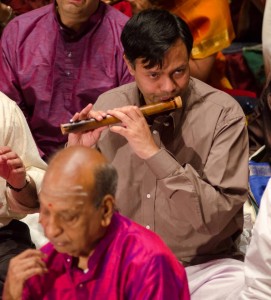
Ajit Ranganathan in the Clevelend Tyagaraja Music Festival . The Flute Maestro N. Ramani in the foreground. Photo: Usha Raghu.
Hailing from the temple town of Srirangam in Tamil Nadu, Ajit got his Electrical Engineering degree from Anna University, Chennai. He earned his masÂters’ degree in electrical and computer engineering from New York University, Buffalo.
In India, he had initial training on the flute from Srimathi N. Kesi, a disciple of the flute legend T.R. Mahalingam (Mali). After coming to Pittsburgh, Ajit, a regular at the annual Cleveland Tyagaraja Music Festival, fine-tuned his technique from the maestro Sri N. Ramani. Ajit has played with Ramani on several occasions at the Cleveland Festival.
In addition to giving full-length recitals in Pittsburgh at S.V.Temple and in Oakland, Ajit has unstintingly helped organizers who approached him for short recitals in their programs. He performed in the Indian Nationality Room dedication function in 2000 at the University of Pittsburgh and also during the opening day of the TropiÂcal Forest India exhibit at the Phipps Conservatory in 2011.
People have enjoyed his recital in the India Day celebration at the CaÂthedral of Leaning, particularly during the initial years when the organizers were struggling to increase participation. He has played countless times every year as part of live orchestra all over the USA.
Ajit has been a vital part of the cultural activities at the S.V.Temple for years, where he was the Chairperson for the Cultural Committee and also its Treasurer. He regularly participated in the temple’s music festivals and during Navaratri. He is well-versed in many classical Sanskrit and Tamil devotional hymns.
Those who have interacted with him have always noticed Ajit’s unasÂsuming demeanor. He always dressed in traditional white dhoti for all religious and music functions at the temple. We will miss not just his musical talents, but also his gentlemanly smiling presence. Most probÂably, we will see Ajit again in the US when he comes on business trips or work, or for giving flute recitals.
Who knows? He may even move back to the US. For now, we wish him well, and thank him for enriching our cultural life in Pittsburgh.
Universal Love for Humanity
Posted by admin in October 2012 on October 20, 2012
By Kris Gopal
e-mail: gutcut@comcast.net
I wish to share a few refreshingly impressive observations during my recent visit to India this year. Though I could have shared other experiences in India, what follows made such deep impressions that I am compelled to share it with you. This is about my visit to an institution built around the idea of universal love.
This love, I felt durÂing my visit to PuttaÂparti, a small village in Anantapur District in Andhra Pradesh, about 120 miles from ChenÂnai, and the same disÂtance from Bangalore. This is the place where the late Sri Sathya Sai Baba lived, and where he established an ashÂram Prasanthi Nilayam (Abode of Supreme Peace). Many of you would have heard of him and this place.
This article is not about him or his spiritual powers, but about his viÂsion and devotion to humanity. The Baba integrated the unique Hindu concept of Unity of Faiths — “All roads lead to the same hilltop,†and service to people in need. His motto was “Hands that help are holier than the lips that pray,†echoing the words of Rabindranath Tagore.
At some point in his journey through life, Sai Baba Health was influÂenced by the credo that education and abundant supply of drinking water are inalienable rights of every individual irrespective of race, religion, caste, and creed. Imagine for a moment that you are poor, and imagine getting all these free, yes free. It is available in Puttaparti, all due to the influence Sai Baba had over his resourceful followers, and his commitment to selfless love and compassion.
Education: Education in schools and colleges he built is a holistic one emphasizing human values. The institutions provide education from the primary school level right up to the postdoctoral level. The curriculum offered in these institutions is so successful that now over ninety countries are adapting this system to their situations. The school of higher learnÂing here is listed as as one of the top four universities accredited by the NAAC (National Accreditation of Assessment Committee). There are about 350,000 children enrolled in Bal Vikas schools now, and over one million youngsters have graduated from Bal Vikas schools. Over one hunÂdred schools are in operation.
No fees whatsoever are charged to the students in these institutions. Such a value-based free education system is spreading to surrounding areas and other states also — a very refreshing and fascinating change, indeed!
Health Care: Even for an economic superpower like USA, the idea of a free and universally accessible health care system for all citizens is unthinkÂable, but universal health coverage is very obvious here at Puttaparti, with a network of general hospitals, super-specialty hospitals, mobile medical hospitals, and medical camps, at no-cost to the patients.
Every patient, irrespective of religion, economic or social background, receives fairly comprehensive state-of-the-art medical care and with unÂconditional love. The medical care is provided in these institutions both as outpatient and in-patient.
Major surgeries are done here with adequate postoperative and prevenÂtive care. One Super Specialty hospital was opened in Puttaparti with about 300 beds in 1991 in a sprawling 153,000 sq. ft. facility. To this day they have treated more than 3 million patients, all free.
As I walked through this hospital, I was impressed by its vastness. The facility was clean, which I have not seen even in many high-priced Indian hospitals. Another striking feature is that all healthcare records are electroniÂcally stored and accessed with no need for paper trails. The USA has been struggling hard to go paperless for years and is far from achieving it.
The hospital does provide their performance stats including death rates, complications rates, and they also maintain all other quality measures. I reviewed them, since I had access, and it was astounding, comparable to any other well-kept hospital anywhere in the world.
A second super specialty hospital has opened in Bangalore near WhiteÂfield in 2001. Both of them complement each other and provide care for the local people. This is also totally free.
By early 2011 these two hospitals had conducted over 95,000 cardiac surgeries, over 56,000 urology and plastic surgeries, 55,000 eye surgerÂies, and nearly 13,000 neurological surgeries and over 6,000 orthopedic surgeries since inception, all of it free of cost to patients.
Taking inspiration from this magnanimity, a few private medical faciliÂties in and around Chennai are trying their bit to provide free healthcare to low-income people. Several institutions are opening up to free health care, which is really a good change.
Drinking Water: The Rayalaseema region is the hottest dry belt in Andhra Pradesh with many villages having no access to even drinking water. Thanks to Satya Sai Baba, now at the cost of Rs. 3,000 million, about 731 villages in this area have abundant water supply both for doÂmestic purposes and for irrigation. The four major water projects have laid 5020 kilometers (3100 miles) of pipeline so far.
This one man Satya Sai Baba’s compassion and love for his fellow human beings have found their way into millions of hearts in India and abroad. Organizations have sprung up in 125 other countries wanting to spread this type of love on humanity. He lived what he preached: “Selfless love is the source of happiness, truth, peace, sacrifice, endurance and all the higher values of life. Love is the most fundamental moral value.â€
Vignette from Indian Literature — Challenges in Being Mindful
Posted by admin in October 2012 on October 20, 2012
I remember in my teens my older brother who raised me yelling at me while I was reading a Tamil weekly. I did not respond, not out of disrespect — that was simply not an option — but only because I did not hear him. Any explanation would have only made the matter worse. So I meekly went about doing the chore I should have done days earlier.
Only when I became an adult did I realize that when we are fully enÂgrossed in whatever we do and fully engaged in that one activity, we forget about ourselves and our surroundings. Examples: struggling to understand a difficult subject, or fully immersed in singing practice, landscape paintÂing, or during the critical stages in cooking.
Pilots during landings and takeoffs are so fully engaged in what they do, they forget about everything else. Surgeons during the critical stages while performing their “procedures†do not hear the piped music in the operating room.
In the Buddhist tradition this faculty is called Sati or mindfulness. It is the state of being fully engrossed in our present moment, and not doing things mindlessly like an automaton. This faculty, acquired by pracÂtice and emphasized in all “Dharmic†religious traditions that originated in India, is the foundation of all Asian meditation practices, whether it is Hindu, Buddhist, Jain, or Sikh.
As is the case with anything worthy of accomplishing, recognizing the difficulty in being mindful is the first step to become fully mindful. Pattinattar, the 10th century Saivite mendicant and ascetic poet puts this nicely in self-deprecating humor. Here is his 4-line alliterating and rhymÂing verse* in Tamil:
Here is a non-poetic translation:
O, The One Who Destroys the Burden of [people’s] Karma, How can You accept my Puja (worship) done while My hands do one thing, eyes follow another object; The mind chases after yet another thing, And the treacherous tongue lies in whatever it says; The body made of flesh goes after something else, And ears listen only to what they want to hear? How can You accept my worship [done with so many distractions]?Pattinattar’s technique of composing the verse in the first person — How can You accept my worship… My hand etc. — also makes it non-judgmental in the minds of readers.
If he had composed the verse in second person singular (your hands, your mind, etc), it is condescending and intimidating. However, by composing in the first person singular, he takes the sting out of it, thus giving hope for people struggling with distractions.
Pattinattar is not alone here. Many of the Indian Bhakti poets, including Adi Shankara, Kabir and many others have used this technique.
*Source: Pattinattaar Paadalgal —Vilakkavurai by Thiru Vi. Ka. Gangai Puttaga Nilayam, Chennai 2006.
Mental Health Issues Among Indians Discussed
Posted by admin in October 2012 on October 20, 2012
— By Premlata Venkataraman
On June 16th at the SV Temple, a meeting was convened by Dr. Balwant Dixit through the efforts of the Temple’s Education commitÂtee and discussed the inconvenient topic of mental health and substance abuse in the Indian Diaspora here. Bringing this discussion into the open was a refreshing beginning, given the social prudishness of Indians and institutional prudishness of our temples.
It was a difficult topic for the 25-plus people in the audience to listen to. But the speakers – practicing psychologists, psychiatrists, and people who have dealt with the problems in their families — were open and candid, and did not mince words.
Mental health and substance abuse issues being problems often swept under the carpet in our community, the speakers tried to bring awareÂness to these serious afflictions by reassuring people that they should not hesitate to seek support in dealing with thes problems.
Dixit, who teaches pharmacology at the University of Pittsburgh, put together a panel of professionals from within the Indian community to bring cultural sensitivity to the afflictions of mental illness within the Diaspora. The panel members were Vishwajit Nimgaonkar, professor of psychiatry and human genetics in the School of Medicine at UPMC; Ranita Basu, psychiatrist at the Veterans Affairs Pittsburgh Healthcare Systems; and Anagha Manohar with a background in social work.
Dixit shared his findings on the statistics on mental illness (bipolar disorders, schizophrenia and others): 6% to 7% of the population in India suffers from mental illnesses. With the social rejection of people suffering mental disorders, more than 70% of those who suffer often deny that they even have a problem. Alcohol abuse is a big problem among Indians.
Dr. Nimgaonkar stressed the complexity of treating mental disorÂders. Recounting his own difficulty to stop smoking, he cautioned on the stronghold addiction has on the psyche of people. It requires great determination and support from family and community, and often mediÂcines to overcome the dependency.
On substance abuse, Anagha Manohar, with her background in soÂcial work, emphasized that communication and vigilance on the part of parents are critical to guide young adults to avoid addiction.
One speaker who brought poignancy to the situation was Ram Eyyunni, co-founder of “Mothers Cry.†He described the travails of his family as his son was diagnosed with schizophrenia at a young age and their attempts to care for him at home. He emphasized the role of the community and the support system it provides to bring relief for families dealing deal with this problem. Mothers Cry strives to bring awareness to the struggles of families in caring for the mentally challenged and in finding better facilities to help them cope.
The talks and the discussions were effective in throwing light on a topic that many do not like to discuss but which needs to be understood.
Editor’s end note: In discussing addiction one topic was conspicuously absent. That was the role of mind, mindfulness and consciousness and how they can be used in managing recovery from addictions. Researchers have recognized the synergy of medical intervention, family nand community support, and mental training in helping people recover from addictions. It is worth recalling this:
* mana eva manushyaanaam kaaranam bandha mokshayoh. (Sankskrit)
“Mind alone is the cause for both the bondage and liberation of humans.â€
— Amrita Bindu Upanishad
Send Off to Prof. Pradeep Khosla
Posted by admin in October 2012 on October 20, 2012
By Khyati Dave
Professional Chair and National Liaison Officer, NetIP-Pittsburgh
e-mail: khyati@netip-pittsburgh.org
Network of Indian Professionals (NetIP) of Pittsburgh on July 14 bid farewell to Prof. Pradeep Khosla through the Indian Community Impact Award Reception held at CMU. Dr. Khosla, after serving as Dean of the College of Engineering at CarnÂegie Mellon University, has taken up position as Chancellor of University of California, San Diego.
As an engineering alumna of CMU inspired by Dr Khosla, I wanted the younger generation to hear the story of his journey. So NetIP organized the farewell with help from the Indian GradÂuate Student Association at CMU and guidance from Dr. Kanak Iyer (CEO of Kanakadhara Financials). Several speakers including Sunil Wadhwani, CEO, iGate Corp and his wife Nita; Audrey Russo CEO, Pittsburgh Tech Council; CMU’s Provost Mark Kamlet; Heinz College’s Dean Krishnan; and Lalit Choradia, CEO Thar Technologies. They talked about Prof. KhoÂsla’s accomplishments and shared anecdotes of their interactions with him. Earthspring Media and Cylab’s film on Dr. KhoÂsla’s career highlights was also screened.
Mr. Bill Peduto, member of Pittsburgh City Council, gave the city proclamation to Dr. Khosla declaring July 14th as Pradeep KhoÂsla day. Dr. Khosla was awarded the 2012 Indian community impact award, a Steuben crystal sculpture designed by Robert Cassetti. It represented a metaphoric bridge suggesting a partnership between equals based on shared values and ideals. With the Indian and the American flags and the Pittsburgh city skyline engraved on a black granite mount, it was an appropriate award to Dr. Khosla — the link between Indian and American education systems. n
Book Review: What it takes to run a restaurant?
Posted by admin in October 2012 on October 20, 2012
Restaurant-411 A Book for Restaurant Goers by Bikki Kochhar 109 pp. Self-published. $14.95 For copies, contact 412 825 6599.
If you want to know everything about opening and running a restauÂrant, here is a book by Bikram Kochhar, who has seen it all. He has successfully run many “ethnic†restaurants—Indian, French, Mexican, Chinese, Thai, even fusion—for years. Known as Bikki, Kochhar partnered with people of diverse backgrounds in running these restaurants. Once, after buying a vacant restaurant, he had the gall to publicize that the restaurant would open in a week, and he did open it in time!

Kochhar (far right) with Manjit Kaur and Didar Singh during the book release. Singh, owner of Bombay Food Market, has partnered with Kochhar in the restaurant business.
Bikki is a quintessential entrepreÂneur. Born and raised in India to affluent parents who were in real estate and the hospitality industry in Shimla, he visits Pittsburgh scouting how this “land of opportunity†really was. Deeply impressed with the America he saw then, he returns to India, convinces his middle class wife to leave everything—even their two kids with his parents in India—and leave for the US with him. Landing in Pittsburgh, he realizes, “I had to work for a living.†Working as a manager in a leading hotel downtown, he sees the power of the union and the media first hand. His wife, who has never worked outside before, works in a restaurant as a cook. After burning his first payÂcheck taking his wife to an expensive dining spot in town, they live on eggs and toast for dinner for days! That is how his life starts.
He learned important lessons after making lots of mistakes, of course! Now in the autumn of his life, he has put all the pointers in a self-published book, taking help from his daughter Benita and grandÂson Nitesh, who spent “lots of frustrating but enjoyable time†working with Bikki and on his difficult-to-read hand-written manuscript.
Even though this is a “How-To†book for the restaurant business, many pointers are useful for businesses marketing nonquantifiable prodÂucts/services to temperamental customers. And the book is an easy read with humorous quotes and anecdotes — By K S Venkataraman
Ha! On the Office of US Veeps
Posted by admin in October 2012 on October 20, 2012
Despite the hoopla surrounding the choice and announcement of Veep candidates in American politics, the occupiers of the Office of Vice President in the US, once settled in office, often do not have nice things to say about the very office they hold.
John Adams, the nation’s first Veep said this on the office of the US Vice President: “The most insignificant office that ever the invention of man contrived.â€
Many presidents made matters worse by ignoring or belittling their vice presidents. President Herbert Hoover didn’t even mention his vice President Curtis in his inaugural address.
l Adlai Stevenson, the veep for president Grover Cleveland, was once asked if President Cleveland had consulted him about anything of even minor consequence. “Not yet,†he said. “But there are still a few weeks of my term remaining.â€
In the 2012 election cycle, Paul Ryan, the Republican Veep candidate and a health nut among the GOP members of Congress, in a radio interview exaggerated his athletic prowess by claiming that he did the 26.3-mile marathon under 3 hours. The three-hour bench mark is a very big deal among Marathon runners. It turns out that Ryan was off by nearly 33%. His actual timing was more like 4 hours.
Nelson Rockefeller, given little but ceremonial duties by President Ford, said of his job: “I go to funerals. I go to earthquakes.â€
Dick Cheney, who was an exception in weilding power behind the scene under his oblivious Bush-43, earned notoriety for shooting a friend in the face when he went quail hunting. Dan Quayle, George H W Bush’s veep, on camera, incorrectly corrected an elementary school kid who spelled potato correctly. Veep Quayle corrected the kid by adding an “e†at the end as “Potatoe.â€
Thomas Marshall, Woodrow Wilson’s veep said this “ There were two brothers. One ran away to sea, the other was elected vice president, and nothing was ever heard of either of them again.â€
Daniel Webster was a powerful conservative politician in the mid 19th century. He was a member of the House of Representative, a US senator, and also the Secretary of State during his political career. Having seen the glorified hollowness of the office, he is said to have declined the offer to be the veep with this gem: “I do not propose to be buried until I am really dead and in my coffin.â€
Sources: Wikipedia and Smithsonian.com.
Refreshing Results in the Spring Primaries
The primaries held in Pennsylvania on April 24 yielded some surprise winners and losers—also some refreshing self-revelations. Our region is stuck with its image as a steel town with strong ethnic roots and union activism. Politically, our voters are labeled as Democratic-leaning social conservatives. This may be changing albeit in small ways, if you go by what happened in the Spring primaries.
In these days of polls and trends, surprises during primaries are rare. But this time we had a few surprises. On the basis of 2010 census figures, Pennsylvania’s declining population lead to the loss of one congressioÂnal seat. With the death of the powerful Democratic Congressman John Murtha, his district in and around Johnstown, PA was eliminated, and was subsumed into the neighboring congressional districts. Congressman Jason Altmire, whose district was redrawn, was expected to face some hard times in the Democratic primary.
 The Democratic Jason Altmire, who scored a big victory against Republican Melissa Hart when he was first elected to the US House of Representatives four years ago, turned moreconservative in an effort to court the more conservative bloc of voters in his district. This was not difficult for him given his lobbyist background prior to becoming a politician. But Altmire’s change of heart — and changes in his political beliefs — won him no friends among the working-class voters in his redrawn district. Even as he won Butler and Allegheny counties, he was bested by Mark Critz from Allentown and erstwhile staffer of the veteran congressman John Murtha. Altmire ran afoul of the labor unions in the district that vowed to defeat him. Also his unpopular vote against Obama’s healthcare bill earned him many enemies among some voters.
The Democratic Jason Altmire, who scored a big victory against Republican Melissa Hart when he was first elected to the US House of Representatives four years ago, turned moreconservative in an effort to court the more conservative bloc of voters in his district. This was not difficult for him given his lobbyist background prior to becoming a politician. But Altmire’s change of heart — and changes in his political beliefs — won him no friends among the working-class voters in his redrawn district. Even as he won Butler and Allegheny counties, he was bested by Mark Critz from Allentown and erstwhile staffer of the veteran congressman John Murtha. Altmire ran afoul of the labor unions in the district that vowed to defeat him. Also his unpopular vote against Obama’s healthcare bill earned him many enemies among some voters.
Mark Critz will face Republican Allegheny County attorney Keith Rothfus in the Fall elections. Altmire may have to go back to what he does best – lobbying for his clients in Washington DC.
Another sweet victory in the primaries was Republican D. Raja’s for state senator. Raja’s Republican opponent Mark Mustio ran a vicious, blatantly racial campaign in the waning days of  the primary. He printed pamphlets and TV commercials, expanding the D in Raja’s name — Dakshinamurthy Raja — in an effort to make him sound foreign and un-American. Raja, an entrepreneur who founded a company in Western PA was falsely accused of outsourcing jobs. Even the Post-Gazette, which initially supported Mustio, in a very rare deciÂsion, reversed its endorsement of Mustio in the face of the virulence in Mustio’s racial ads. The citizens of the 37th District too sent a strong message against blatant racist propaganda by electing D. Raja as their Republican nominee. Now, Raja is likely to walk into the Commonwealth of Pennsylvania’s Senate chambers if he faces no Democratic opposition in the Fall election.
the primary. He printed pamphlets and TV commercials, expanding the D in Raja’s name — Dakshinamurthy Raja — in an effort to make him sound foreign and un-American. Raja, an entrepreneur who founded a company in Western PA was falsely accused of outsourcing jobs. Even the Post-Gazette, which initially supported Mustio, in a very rare deciÂsion, reversed its endorsement of Mustio in the face of the virulence in Mustio’s racial ads. The citizens of the 37th District too sent a strong message against blatant racist propaganda by electing D. Raja as their Republican nominee. Now, Raja is likely to walk into the Commonwealth of Pennsylvania’s Senate chambers if he faces no Democratic opposition in the Fall election.
The final act in Western Pennsylvanians’ verdict was the abrupt derailment of Rick Santorum’s Presidential — and maybe also his Veep — ambitions. Rick Santorum, who was doing well in the latter part of the Republican primaries, particularly in the South, with his socially and 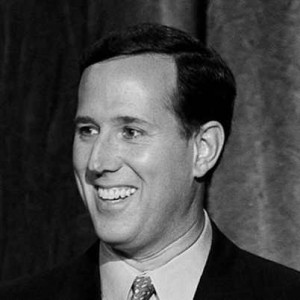 religiously conservative platform, suddenly found himself out of sync with his own hometown voters who elected him both as a congressman and also as a two-term US senator. His extremely conservative message this time around had few takers in PennsylÂvania and in his native Pittsburgh region. After all, the state and the region had already sent Santorum packing in his last Senate race. With lack of funds and support, the Santorum Express ground to a halt in Pennsylvania and he dropped out of the presidential primaries to avoid loss in his own home state. Having gotten all the face time and the media attention in the pre-primary season and during the long primaries with nearly twenty debates, he will be back for in 2016 if Mitt Romney loses in November.
religiously conservative platform, suddenly found himself out of sync with his own hometown voters who elected him both as a congressman and also as a two-term US senator. His extremely conservative message this time around had few takers in PennsylÂvania and in his native Pittsburgh region. After all, the state and the region had already sent Santorum packing in his last Senate race. With lack of funds and support, the Santorum Express ground to a halt in Pennsylvania and he dropped out of the presidential primaries to avoid loss in his own home state. Having gotten all the face time and the media attention in the pre-primary season and during the long primaries with nearly twenty debates, he will be back for in 2016 if Mitt Romney loses in November.
Thus the primaries ended in Western PA this Spring with refreshing changes in the political landscape. Now we need to brace ourselves, through Summer continuing into Fall, for a barrage of negative ads and character assassinations, which have become hallmarks of election year politics in these days of SuperPACs.
An Appeal for Readers to Register to Vote and then Vote in NoÂvember: No matter what your political affiliation is, please make it a point to go and vote in November. The people who run your polling booths are volunteers living in the communities where you live. It is imperative that they see the Indian-Americans taking their civic duties seriously by exercising their voting rights in every election.
But to vote in the November election, you need to register yourself to be eligible to vote. If you have voted in the last general elections in your local district where you live now, you are already registered. If you want to register to vote, go to this website and get the details:
www.votespa.com/portal/server.pt/community/home/13514 ï®
Phipps Unfurled Tropical Forest India in Colorful Gala in March
By Meena Mutyala, Fox Chapel, PA
Meena Mutyala grew up in Nagpur, India, went to IIT Madras and then to graduate school at Northwestern University. She also obtained her executive MBA from the University of Pittsburgh. She and her husband Brahmaji are long-time residents of this area and have two adult children. She works in a large international company in Pittsburgh. Note: The pictures in this story are from Renee Rosensteel.

The facade of a typical South Indian Temple created by Sthapati Ayyachami Narayanan of Penn Hills at the Phipps Tropical Forest India Exhibit.
Saturday, March 17. The temperature was in the 70s and humidity pleasantly low. The orÂganizers at Phipps Conservatory could not have asked for a more pleasant day for the inaugural gala for unfurling The Tropical Forest India, the 3-year-long live exhibit. An overflowing number of nearly 400 people — trustees of Phipps, Phipps officials, patrons, volunteers, and others, among whom were a large number of Indian-Americans — gathered under the canopy of lush tropical plants of India with the sights, sounds, aroma and the bustle of an Indian celebration. Rangoli at the entrance creÂatively done with toor dal, masoor dal and rajma beans; delicious fusion food; music; tasteful Indian decorations and tapestry and decorations — all amidst exotic Indian plants — created an ambience that was truly unique and special.
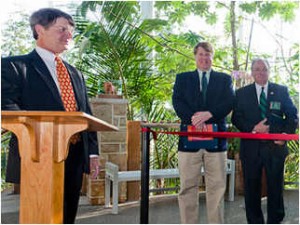
During inauguration L to R: Phipps' Richard Piacentini, Allegheny Co. Chef Executive Rich Fitzgerald, and Penna's US Congressman Mike Doyle.
 This exhibit was planned for over two years with Ben Dunigan and Jordyn Melino, the two horticulturalists at Phipps, traveling to India in 2010 and spending weeks in the lush Western Ghat region. Since then, they have devoted themselves to Tropical Forest India from the design phase through the installation and the grand opening. The researching of the plants and obtaining the special plant species from the Western Ghats and the Himalayan/Assam region has been their passion. They also took the lead in the overall décor of the exhibit. Jordyn came to the event on March 17th in a green Kanchi saree — appropriate for St. Patrick’s Day on that Saturday and for an Indian celebration!
An ornate entrance in the form of an Indian temple façade led the guests into the Special Events Hall. This richly colorful entrance was created lovingly by our own SthaÂpati Ayyachami Narayanan (who did most of the decorative sculpÂtural work and the repair work on the towers at the S.V.Temple) working closely with Dunigan on the design and colÂor scheme. The ceiling of the Special Events Hall is painted with elaborate murals patterned after the Madurai palace ceilings by the Pittsburgh-based Indian-American artist, Francis Cleetus.
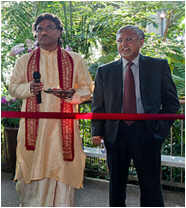
Pandit Vinod Kumar Pandey from H-J Temple reciting Sanskrit hymns during the opening ceremony with Pramod Bajaj from New York Indian Consulate standing beside him.
For both Narayanan and Francis, this was a unique opportunity for showcasing India’s visual arts to all those visiting Phipps during the next three years. They worked enthusiastiÂcally for two months and the result is spectacular. With its grand entrance, the Special Events Hall is going to be a perfect place to rent for private Indian events.
The Honorary Chairs of the Gala Event were Krishna and Om Sharma. Vijayalakshmi MadÂhavan provided a veena recital with Johnson Kottakalil Paul (a disciple of Pt. Keshab Kanti Chowdhury of Delhi Gharana) providing laya (percussion) support on the tabla. There was also a classical Kathak recital by Varun and Sonia Mahajan, and Bhangra dancing.
As the night moved on and we had our fill of interesting conversations, great food and drinks, many – including several from Mainstream USA — got into Bollywood dancing!
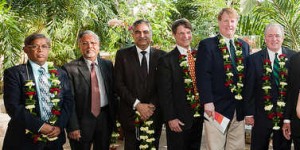 L to R: Sthapati Ayyachami Narayanan; Pramod Bajaj from the Indian Consulate in New York; Rajiv Malik, President Mylan Inc.; Richard Piacentini of Phipps; Rich Fitzgeral, Chief Executive of Allegheny Co.; and Penna’s US Congressman Mike Doyle during the inauguration.
L to R: Sthapati Ayyachami Narayanan; Pramod Bajaj from the Indian Consulate in New York; Rajiv Malik, President Mylan Inc.; Richard Piacentini of Phipps; Rich Fitzgeral, Chief Executive of Allegheny Co.; and Penna’s US Congressman Mike Doyle during the inauguration.
The gala opening event and the overall exhibit gave me a sense that the Indian American community and Indian culture and traditions have become an integral part of the Pittsburgh arts and cultural scene. As Ritu Thamman, one of the members of the planning committee, put it, “I feel so proud that this has happened in Pittsburgh and we can showcase Pittsburgh and India for the next three years.â€
Phipps Executive Director Richard Piacentini was effusive in acknowlÂedging the work that has gone into this project: “In addition to the efforts and creative vision of the forest curator Ben Dunigan, program specialist Jordyn Melino and other staff, a tremendous amount of talent, knowledge and support from Indian communities in Pittsburgh and abroad went into plans for Tropical Forest India.â€
Greg DuFour, Director, Development Campaign at Phipps said, “It is our hope that this unique exhibit celebrating one of the most precious natural areas on earth will captivate visitors with its beauty, inspiring them to explore the many ways we can all help promote biodiversity with the choices we make every day.â€
Make it a point to get out to Phipps and see the 12,000 square feet of Indian ethnobotanic displays and also the cultural and educational programs that highlight the people, culture and flora of India in all its diverse splendor.
And when we have out of town guests, let us show off Phipps — the glass jewel of Pittsburgh and the world’s most energy-efficient greenhouse that now houses the splendid Tropical Forest India exhibit.
Acknowledgment: The graphics in the stories are by Renee Rosensteel. ï®
Ask a Professional Wedding Planner
By Erin Calvimontes, Divine Celebrations, Pittsburgh PA
www.PittsburghIndianWeddings.com
Phone: 412-436-0337
Also visit us on FaceBook — Divine Celebrations
Erin Calvimontes specializes in Indian Wedding traditions and décor and has been in the wedding industry for 25 years. Erin is a PBC- Professional Bridal Consultant, a certified event professional. She is a member of the Association of Bridal Consultants, Co-Director of ABC in Western PA, and a member of ISES Pittsburgh Chapter.
Planning a wedding can be very overwhelming for brides and their families. So, hiring a professional wedding planner to guide you through the planning process can be the best thing you do, saving you time, money, and less stress!
Here are questions from REAL Brides & Mothers of the Brides:
Q: What is the first thing I should do to get started? Sangeeta R.
A: I recommend all my clients get a solid guest list from both sides of the family. This will help you determine everything from venue size to budget.
Q: How do you estimate a realistic budget? Deeba Mahmood
A: You and I talk about all your needs and details of the wedding weekend. I then put toÂgether a detailed realistic budget for you. I have many years of experience with service providers and venues and know what they can cost. I also do the research of service providers and venues for you, saving you time and money.
Q: How many meetings are included in your full service package? Nalina Prabhu
A: You get unlimited meetings, communication and service provider contacts with our full service package. Collecting all the details throughout the planning process is very important to ensure a flawless event so my clients can relax on the special day.
Q: How do you handle conflicts between families of different cultures? Judy Karam
A: I help communicate and educate both sides on the others’ cultural traditions. I work very hard to blend the cultures and respect both famiÂlies’ needs and de-stress the situation by coming up with alternatives to the conflicts.
Divine Celebrations has a large network of professional service providers for all your wedding needs. If you have wedding questions, please e-mail us:
design@divinecelebrations-events.com
and we will answer them promptly.
Full service, partial planning, and “Month of Event†manageÂment available and more…
Extensive knowledge and exÂperience in South Asian as well as traditional Western ceremoÂnies and events.
You are invited to be a Guest at your own Wedding.
Silk Screen’s Sixth Multicultural Gala
 By Merritt Wuchina, PR and Marketing Intern for Silk Screen
Silk Screen has pulled off an amazing night yet again. To open its Seventh Annual Asian American Film Festival, the organization hosted a multicultural Gala on Friday, May 11 at the Rivers Club in Oxford Center. Nearly 500 guests attended, with many of them wearing ethnic dress such as Indian saris, Japanese kimonos and Chinese changshans.
For some guests, the night started at the Harris Theater with an OpenÂing Night screening of Luc Besson’s The Lady, a biopic about Burmese democratic leader Aung San Suu Kyi.
This was the first year Silk Screen hosted the Gala at the Rivers Club, which provided new rooms for different activiÂties. First, guests were invited into the “screening room†to watch trailers from the festival’s lineup while enjoying appetizers and drinks.
Guests also bid on a variety of silent auction prizes, including a series of miniature paintings by Silk Screen’s Founder and Executive Director himself, Harish Saluja.
Saluja, an artist, filmmaker and entrepreneur, started Silk Screen as a 501(c) 3 nonprofit in 2005 in an effort to educate the Pittsburgh community about Asian and Asian American culture through the media arts. The Gala’s success was made possible by the hard work of Saluja, Operations Manager Katie Jones, Volunteer and Programming Coordinator Ruby Jain, and a team of employees, interns and volunteers.
Later in the evening, guests dined on Indian, Chinese and Middle Eastern food from various local restaurants. Performers like the Steel
Dragon Lion Dance Team, Yanlai Dance Academy, the Pittsburgh Iranian Dance Group and more filled the room with delightful costumes, color and sounds.
Between acts, WTAE anchor Sally Wiggin kept the night moving along as the Gala’s entertainÂing emcee.
A notable attendee was Pittsburgh-born actor Manu Narayan, the star of Good Night, Good Morning, a US/Indian film featured in this year’s festival lineup.
“This festival gives glimpses into other culÂtures and I feel like it’s very important,†Narayan said.
The Gala and Festival also left an impression on Jeremiah Jackson, the Director of Diversity at Sewickley Academy.
“It’s for a tremendous cause,†Jackson said. “It really helps bring awareness of a lot of cultural things, a lot of issues that are happening in the world, and it just helps people come together in a unique and exciting way.â€
The festivities ended with an eclectic dance party mix of music rangÂing from Brazilian pop to Indian Bhangra provided by Global Beats DJ Carla Leininger.
At the end of the night, guests returned home to rest up and get ready for a mind-opening week of diverse films from across the Middle East and Asia.


